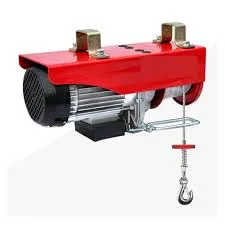


Understanding Lever Chain A Key Element in Mechanical Systems
In the world of mechanical systems, the lever chain stands out as an essential component that plays a crucial role in the manipulation of forces. Lever chains are commonly used in various applications, from simple tools to sophisticated machinery, facilitating the transfer of motion and increasing the efficiency of tasks. This article aims to explore the concept of lever chains, how they work, their applications, and their significance in engineering.
At its core, a lever chain is a mechanism comprising a series of interconnected links that can transmit power and motion. The basic principle behind a lever chain is rooted in the laws of physics, namely the lever principle, which states that when a force is applied to one end of the lever, a greater force can be exerted at the other end, based on the distances from the fulcrum. This principle allows for the multiplication of force, which is critical in industries where heavy lifting and precise movement are required.
One of the most recognizable examples of a lever chain is the bicycle chain. In a bicycle, the pedal motion translates into rotational movement, which is transferred through the chain to the rear wheel. This simple yet effective design showcases the practicality of lever chains in everyday life, enabling efficient transportation. However, the application of lever chains isn’t limited to bicycles; they are also pivotal in cranes, elevators, and various conveyor systems where heavy loads need to be moved with minimal human effort.

The effectiveness of a lever chain is largely dependent on its design and material composition. Chains can be made from a variety of materials, including steel, plastic, and other composites, each chosen based on the specific requirements of strength, flexibility, and resistance to wear. For example, in heavy-duty applications like construction sites, lever chains made of high-strength steel are often employed to ensure durability and reliability under extreme conditions.
Moreover, the arrangement of the chain links is integral to its performance. The shape, length, and strength of each link contribute to the overall functionality of the lever chain. Proper maintenance is crucial for ensuring optimal performance; regular lubrication and inspection for wear and tear can significantly prolong the life of the chain and prevent catastrophic failures that could endanger both machinery and personnel.
In addition to their mechanical applications, lever chains also have a significant role in various engineering problems, particularly in areas such as robotics and automation. In robotic arms, for instance, lever chains can be used to increase the range of motion and to enhance the precision of movements. By applying the principles of lever mechanics, engineers can design systems that automatically adjust to various loads or tasks, paving the way for more advanced and efficient industrial processes.
In conclusion, the lever chain is an indispensable element in modern mechanical systems. Its ability to transfer and multiply force has made it a foundational component in various applications, ranging from everyday tools to complex machinery. As technology continues to advance, it will be fascinating to see how the design and application of lever chains evolve, allowing for even greater efficiencies in engineering and manufacturing. Understanding the mechanics behind lever chains not only provides insight into their current uses but also sets the stage for future innovations in the field. As we strive for more efficient and sustainable solutions, the humble lever chain will undoubtedly remain a key player in the machinery of progress.



